Dental Disease
Studies show that 70-80% of all cats and dogs that are more than two years old are affected by dental disease such as gingivitis and periodontal disease. This means that more than half of the patients seen at James Street Veterinary Hospital are victims of these preventable conditions.
Periodontal disease is progressive and affects the teeth, gums and the bone which supports them. It is caused by a build-up of plaque and tartar on the tooth surface. Without adequate preventative care and treatment, periodontal disease can result in discomfort, pain, bad breath, irreversible damage to gums, premature loss of teeth, and infections that can affect other organs in the body such as the heart, liver and kidneys.
CHECK YOUR PET’S TEETH AND GUMS
The first sign of dental disease may be bad smelling breath (halitosis). This is caused by bacteria and infection in your pet’s mouth. Other signs may be red, painful gums, build-up of tartar on teeth, discoloured, worn or broken teeth and even pus in the mouth. Unfortunately, many pets will show no outward signs of suffering although they feel the pain of dental disease just like we do. However animals cannot complain verbally and in nature showing signs of pain or disease may lead to loss of status in the pack so they suffer in silence. Most animals with dental disease will continue to eat normally!
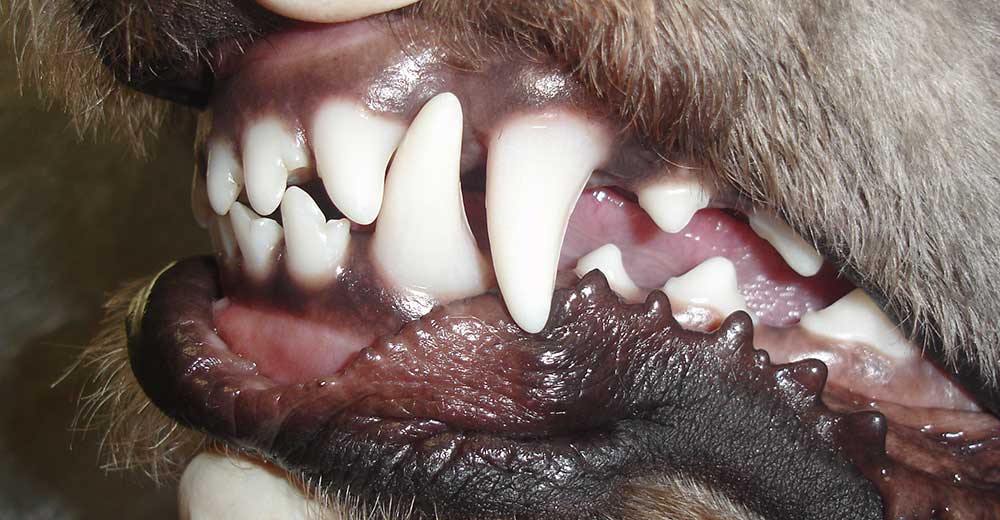
DENTAL PROBLEMS AND OVERALL HEALTH
Untreated dental problems can develop into serious, and even life-threatening diseases in our pets that require expensive long-term medication. Gum disease and rotten teeth can result in infections that spread to the blood stream and vital organs like the kidney, liver and heart, causing disease in later life in aging pets.
WE RECOMMEND A PREVENTATIVE APPROACH
Train young puppies and kittens to allow examination of their teeth and gums. Get used to the appearance of a healthy mouth so that you can recognise when there is problem. Just as in people, tooth brushing the best way to keep your pets’ teeth healthy. There are many dental diets and chews that will also help to remove plaque and tartar before they build up and cause gingivitis and periodontal disease. Some pets will also benefit from mouth washes, gels and water additives if they do not accept any of the above methods. Most pets will also need annual professional hygiene treatments (scale and polish) under general anaesthesia and this need increases as the pet ages. Some breeds are more predisposed to be affected by gingivitis and periodontal disease. Early prevention is the best way to save teeth. Our staff at James Street Vets are very happy to discuss the most appropriate home care solution for your pet and provide you with all that you need to ensure your pet’s mouth is clean and healthy.
See VOHC (veterinary oral health council) website www.vohc.org for information on products which have been tested and approved for prevention and control of plaque and tartar in dogs and cats.
THE DENTAL CHECK PROCESS
During the dental check (which is included in every full health check), we will examine your pet’s teeth and gums, and discuss any treatment that may be required. Some problems are easy to see by looking in the mouth but many pets resent having their mouth opened and examined closely so sometimes a quick glance is all that is possible in the conscious animal. If there are signs that there may be dental disease we may recommend a general anaesthetic and a complete assessment and treatment will be carried out while the pet is asleep. Of course, if your pet’s teeth are healthy we will let you know what to look out for in the future and give you some tips and advice for keeping their teeth clean and healthy!
DENTAL PROCEDURES UNDER ANAESTHESIA
As with every General Anaesthetic at James Street Veterinary Hospital your pet will be thoroughly assessed to rule out any underlying problems which may increase the risk of anaesthesia and you will be offered the option to have pre-anaesthetic blood tests, especially in older or otherwise compromised animals. All animals will have intravenous fluids and constant monitoring throughout their anaesthesia and all will have full mouth dental xrays taken. Each tooth will be probed and individually checked and recorded on a dental chart. Ultrasonic and manual scaling will remove plaque and tartar above and below the gum and then the teeth are polished smooth. If extractions are needed (this will have been discussed with owners before doing so) local nerve blocks are used as well as pain relief injections before and afterwards. All pets also go home with oral pain relief. Many extractions in dogs and cats require gum flaps to be lifted and overlying bone removed with high speed dental burs followed by suturing with dissolvable sutures. This is because the roots of animal teeth are much longer than those of people and are not usually able to be easily “pulled” out. This method also avoids leaving empty sockets which are painful and can become infected and the sutured gums heal much faster.
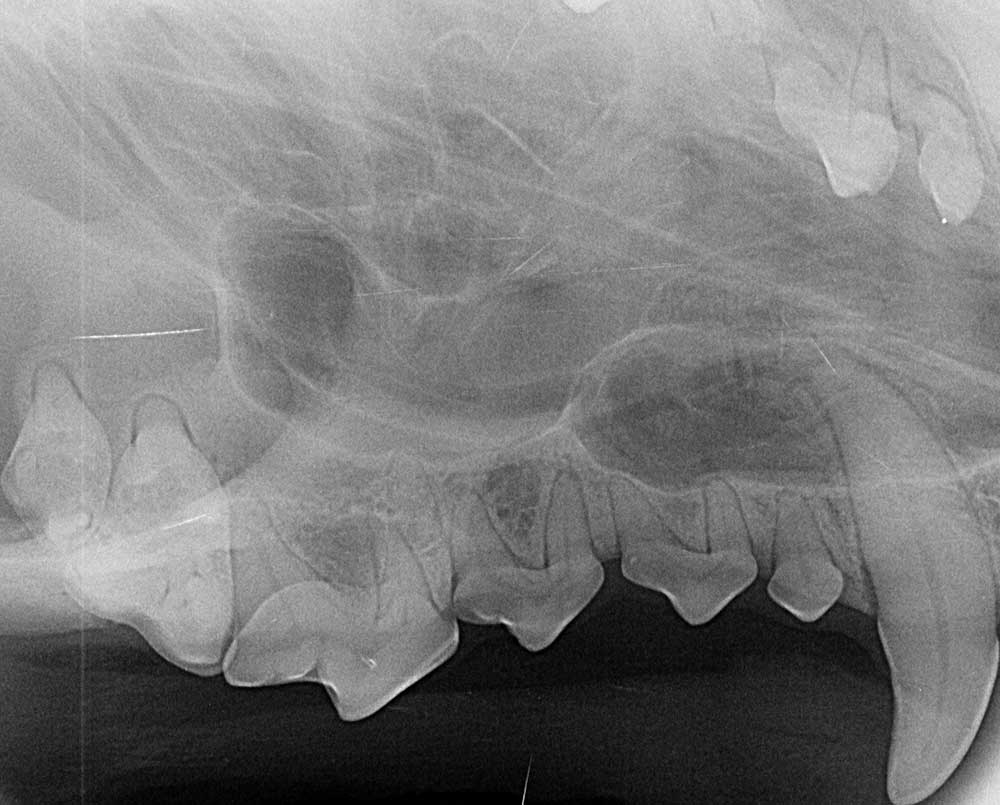
BROKEN TEETH
Up to 10% of pets suffer from broken teeth. Many of these animals are young and the rest of their teeth may be healthy but broken teeth should not be ignored. They are as painful in animals as they are in people and infection can travel into the pulp if it is exposed and cause death of the tooth and destruction of the surrounding bone. The animal may stop chewing on the side which has the damaged tooth, and this can lead to build up of plaque and tartar in that part of the mouth. We recommend xrays and deep probing under general anaesthesia to assess the type of fracture and whether the tooth is dead or dying. If the pulp is affected, we have always recommended extraction but now can also offer an alternative option in some suitable cases to save the tooth by performing a root canal treatment for important teeth such as the canine teeth. This can be done under one anaesthesia. Some teeth are not fractured into the pulp and are still alive but sensitive so can be preserved with application dental bonds or sealant.
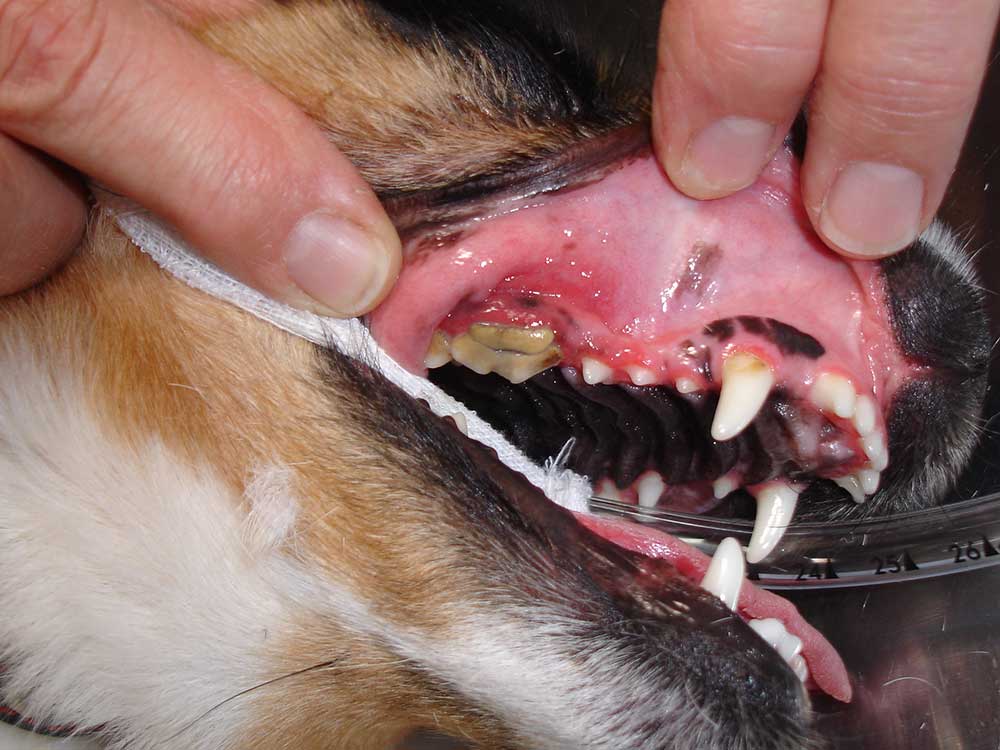
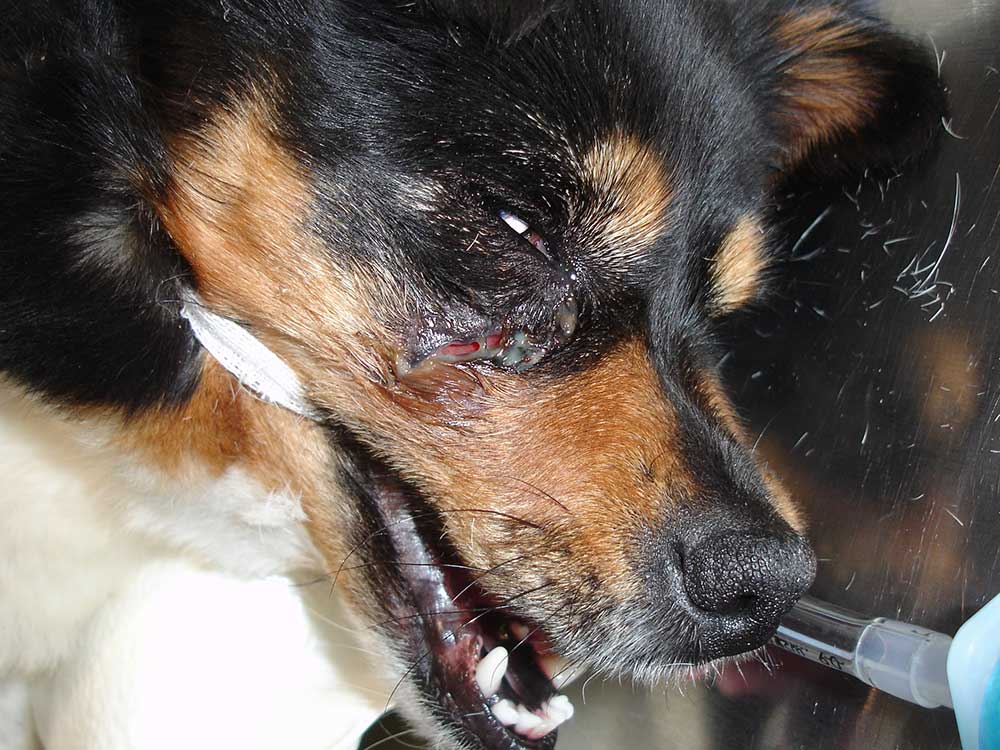
MALOCCLUSION

CATS NEED DENTAL CARE TOO
Cats also suffer from all the same problems as dogs such as gingivitis and periodontal disease, but they have a couple of additional serious oral conditions that occur more commonly in cats than dogs.
1. Feline Chronic Gingivostomatitis (FCGS)
These cats may be any age including less than a year old and they develop a very severe gingivitis which spreads from the gums surrounding the teeth and extend throughout the mouth and into the palate and pharynx. The cause is unknown and it is unresponsive to most drugs. It is very painful and is one of the few oral conditions which can cause decreased appetite and even weight loss in some cats. Many of these poor cats have signs of dental disease affecting the teeth but some may have normal looking teeth while still having severe swelling and inflammation in the surrounding gums and oral mucosa, often including the back of the throat. Cats with FCGS usually need many, if not all, of their teeth extracted and many then recover totally. This is a very frustrating and painful disease but with early intervention the outcome can be very good. It is essential that treatment of these cats includes dental xrays as leaving any tooth or root fragments behind means that extractions may be unsuccessful.
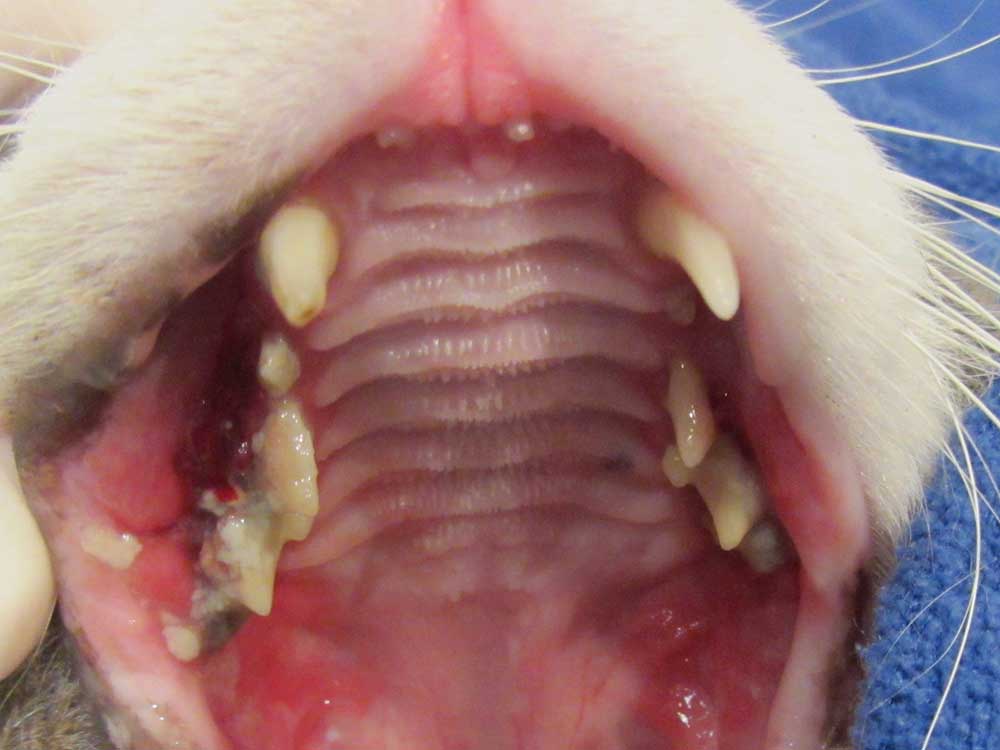
2. Tooth Resorptions
This may affect up to 60% of all cats at some time and is more common in older cats but may be seen in young cats too. The structure of the tooth starts to be reabsorbed and small defects develop which extend to the crown of the tooth. Holes and erosions appear which expose the sensitive pulp and cause pain and sensitivity. These cats avoid chewing with the affected teeth and tartar then may be seen on nearby teeth. The only treatment for this condition is extraction as early as possible and dental xrays are essential for early diagnosis and correct treatment.
